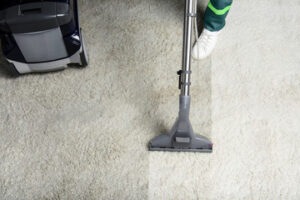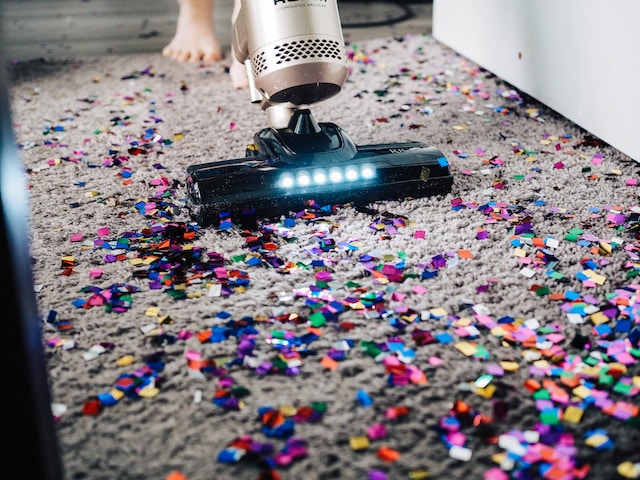Carpets are prone to trapping various potentially harmful substances, including odors, mildew and mold, dirt, and dust mites. Even with regular vacuuming, these contaminants can build up and negatively affect the health and comfort of your home.

Residential Carpet Cleaning El Dorado Hills CA is an essential service that should be performed regularly. It offers a number of benefits that other less thorough cleaning methods cannot provide.
Carpets are a major part of the indoor environment in homes and businesses. In addition to adding comfort and style, they also act as a filter, trapping many airborne pollutants. These include dust, dirt, pet dander, spores, and volatile organic compounds. Regular cleaning and maintenance can help improve your indoor air quality and protect your health.
While vacuuming can remove some of these particles, it cannot get deep down into the fibers. This is where professional carpet cleaning can help. Using high-powered equipment and special shampoos, professional cleaners can eliminate dirt and stains that vacuuming alone cannot. Once the dirt is removed, the carpet can be dried quickly with hot water and post-treatment chemicals. In addition, carpets are groomed and treated to prevent re-soiling and to extend their lifespan.
Dirty carpets can be a breeding ground for mites and other insects that can affect your indoor air quality. The waste that these tiny bugs leave behind, such as feces and body fragments, are allergens that can cause a variety of respiratory problems. Professional carpet cleaning can eliminate the mites and their waste, improving your indoor air quality.
Regular maintenance and cleaning can also prevent mold and mildew from growing in your carpet. This is important, because if mold and mildew are allowed to grow, they can release spores into the air that can irritate your lungs and other respiratory systems. Professional carpet cleaning can eliminate the mold and mildew and prevent them from returning in the future.
Poor indoor air quality can contribute to a variety of problems, from allergies and asthma to headaches and dizziness. However, there are some simple steps that you can take to improve your indoor air quality, such as keeping your carpet clean and getting it cleaned by a professional carpet cleaning service.
Carpet acts like giant air filters in your home, trapping many of the contaminates that are released into the air when you walk on them. Regular vacuuming and deep cleaning can reduce the amount of airborne contaminants in your home, helping to improve indoor air quality and protecting your family’s health.
Removes Allergens
Carpet is known to trap a wide variety of allergens like pollen, mold, dust mites, pet dander, bacteria and more. These allergens can cause allergic reactions in family members and guests that include rhinitis, itchy eyes, asthma or eczema. Regular carpet cleaning removes these contaminants from the home, making it a more comfortable environment for people that are sensitive to them.
The type of carpet in a home also has a large impact on the amount of allergens that are trapped in it. Carpets that are made of a synthetic nylon or have low pile are more prone to holding onto allergens than those with a higher pile. Regardless of the material, however, carpet can hold on to pollen and other particles despite many vacuuming cycles. It can also become a breeding ground for dust mites and mildew spores.
Vacuuming on a regular basis is the best way to reduce allergy symptoms as it removes surface-level dirt and dust. A high-quality vacuum cleaner that uses a HEPA filter will trap more allergens and prevent them from being kicked back into the air when walking on the carpet. It’s recommended to vacuum carpets on a weekly basis in general and up to three or four times per week during allergy season or in areas of heavy traffic.
Preventative steps that can reduce the need for residential carpet cleaning include using a doormat at the entrance to keep outside allergens from being tracked into the house. Asking guests and family to remove their shoes will also help reduce the amount of outdoor allergens that are deposited on the carpet. Lastly, regularly brushing the carpet with a Gamby broom or a carpet rake will break loose embedded dirt and improve vacuuming.
Getting a professional to clean the carpet in your home is another good way to reduce the amount of allergens that are trapped inside of it. Professionals have the right tools to remove more allergens than a standard vacuum cleaner and may offer lower-emission cleaning solutions that are safe for people with allergies. They may even use a hot water extraction method that will kill any bugs and pests that live in the carpet’s fibers.
Makes Your Carpet Look Like a New One
Carpets are a beautiful and comfortable addition to any room, but they tend to get dirty quickly. Even with regular vacuuming, stains and embedded dirt can make a room look old, dingy, and unclean. Dirty carpets can also trap allergens, which can be a problem for people with allergies or respiratory issues. Fortunately, there are a few things you can do to keep your carpets looking like new and smelling fresh.
Vacuuming regularly is the most important step to keeping your carpets clean and looking their best. Vacuuming helps remove dirt that has become ground into the fibers by everyday foot traffic. It is recommended that you vacuum your carpets at least once a week, twice if you have high traffic areas.
Besides vacuuming, you can use doormats at all entryways to help trap dirt before it is tracked into your carpet. You should also take your shoes off when entering a room to prevent the transfer of grit from your feet to your carpets. Using a stain removal product can also be helpful in preventing stubborn stains and maintaining your carpet’s appearance.
Regular residential carpet cleaning can also extend the life of your carpets by restoring the color and removing odors. It can also prevent the formation of dark spots called “traffic lanes” from excessive foot traffic. In most cases, traffic lanes appear in the same places every time you walk across the room, and they are typically darker than the rest of the carpet.
A professional carpet cleaner uses special tools to scrub the dirt out of the carpet. The oxygen in the cleaning solution breaks up the dirt, detaching it from the carpet’s fibers and encapsulating it so that it can be easily removed during the vacuuming process. The carpet is then rinsed and treated with post-treatment chemicals like protectors. Finally, the carpet is groomed and dried with air movers to make it look better and feel softer.
Aside from these steps, you can also do other things to keep your carpets clean and smelling fresh. If you have children or pets, be sure to vacuum your carpets often. Whenever possible, you should use a natural carpet cleaning solution that doesn’t contain harsh chemicals or perfumes. It is also a good idea to change your air filters frequently to reduce the amount of dust and other pollutants in the air.
Saves You Money
Carpets trap a lot of dirt, germs, and allergens, especially those that people track in on their shoes. Whether it is dust, pet hair, or a range of other contaminants, they end up embedded in the fibers and can cause a variety of health problems. Having your carpets regularly cleaned by a professional eliminates these contaminants and helps to protect you and your family from them.
If you have pets, children, or frequently entertain guests in your home, it is even more important to have your carpets cleaned. Not only do these individuals track in all sorts of unwanted substances, but they also tend to create stains and make the carpets appear worn out faster. A residential carpet cleaning company uses specialized tools to remove these stains and can often give your carpets the appearance of newer ones.
Another way that residential carpet cleaning can save you money is by extending the life of your carpets. Since dirt and stains can damage the carpet fibers, they will have to be replaced sooner than those that are kept clean. By regularly having your carpets professionally cleaned, they will last longer and keep looking their best.
Businesses have all sorts of expenses to deal with, such as employee payroll, utilities, computers, and equipment maintenance. However, a business owner can often save on these expenses by having their office carpets professionally cleaned on a regular basis. Residential carpet cleaners typically charge per square foot, and you can get an estimate by measuring the area that needs to be cleaned.
Another way that residential carpet cleaning can save you is by reducing the likelihood that you will need to pay a security deposit when you move out of a rental property. Since carpets are commonly scrutinized during the move-out inspection, having them professionally cleaned can significantly increase your chances of receiving your entire deposit back. In addition, if you hire a residential carpet cleaning company, they will usually charge less for the services than if you were to rent a portable cleaning unit and do the work yourself.

